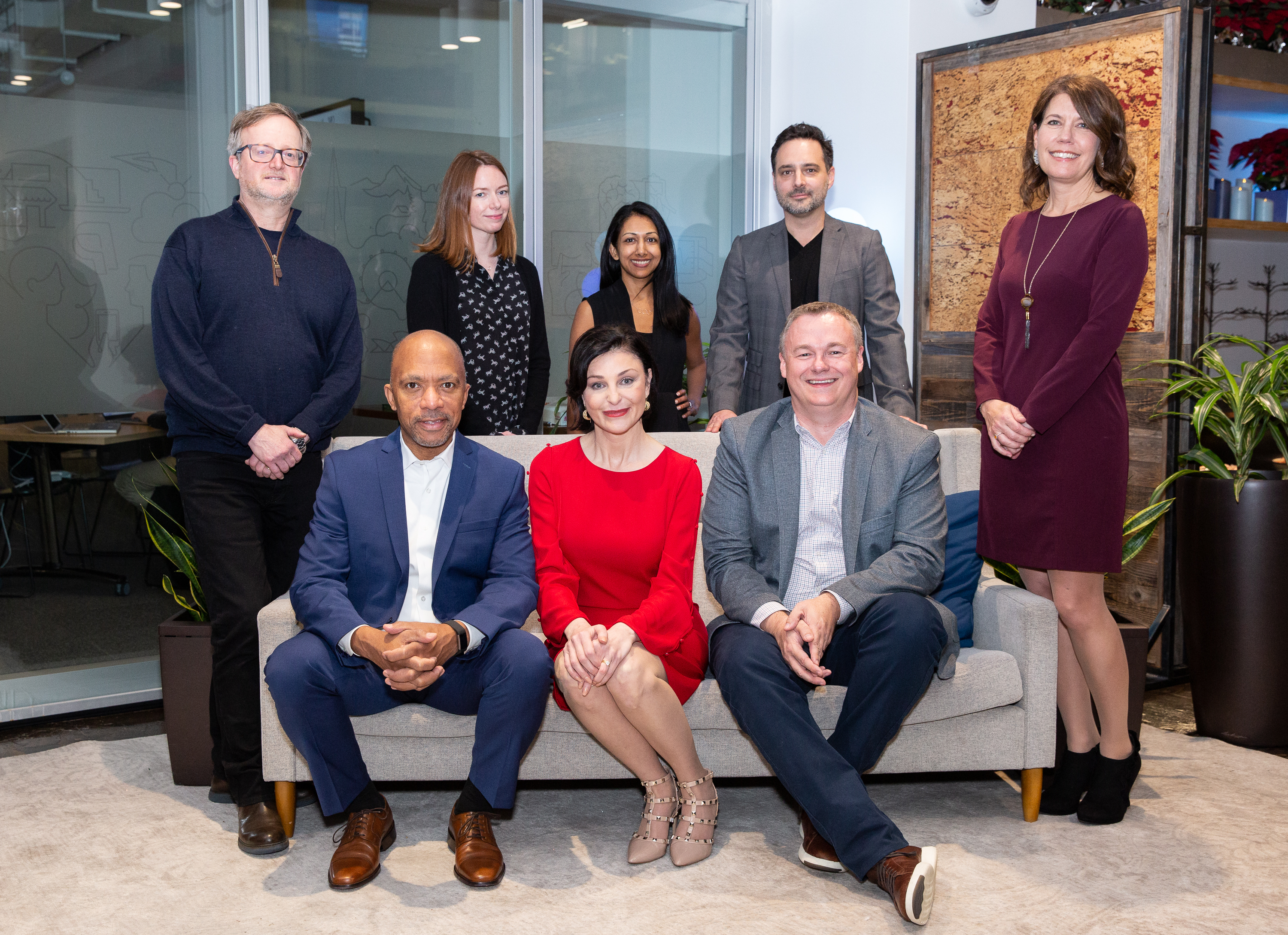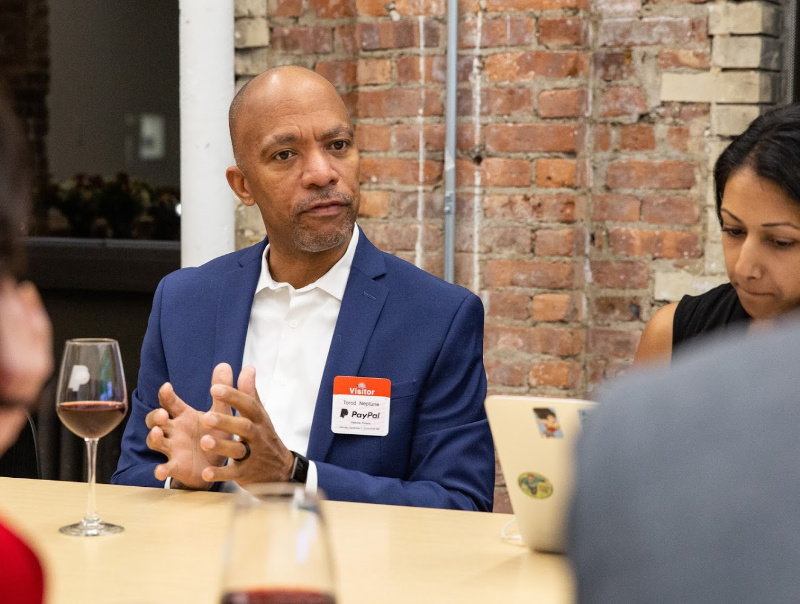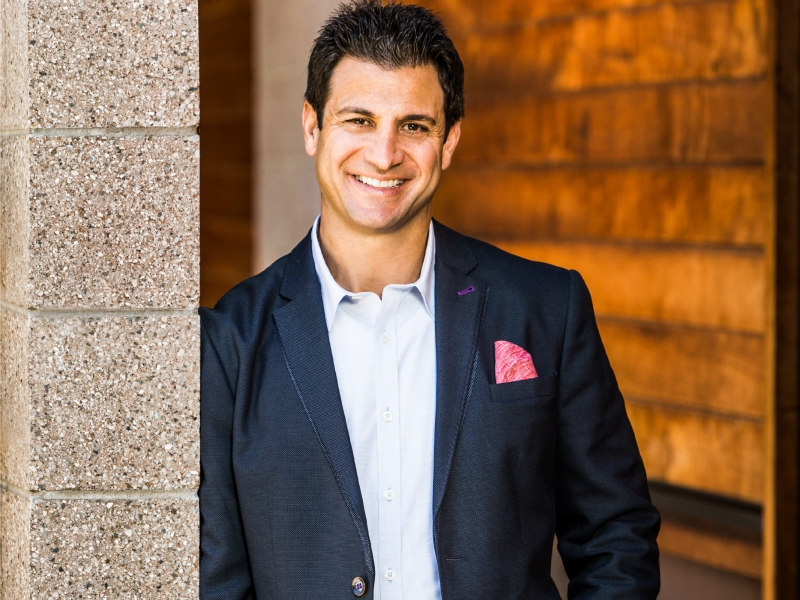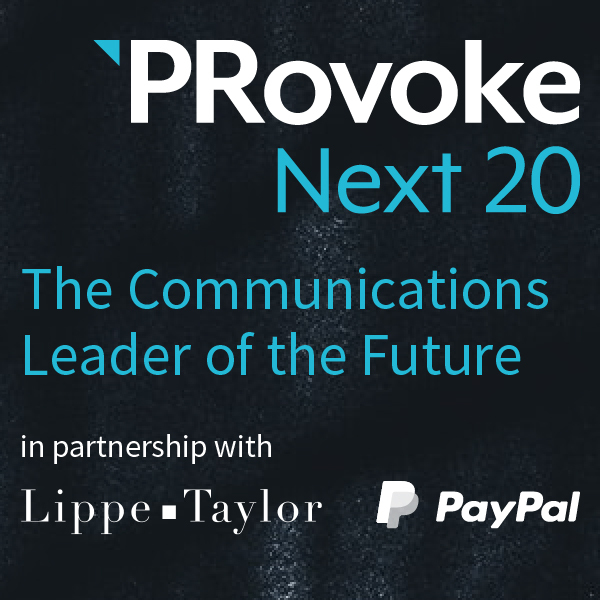Aarti Shah 11 Mar 2020 // 4:05PM GMT

When the Business Roundtable updated its statement of the purpose of a corporation in 2019, CEOs from JPMorgan Chase and Walmart were among the chief architects. PRovoke Media recently convened a salon with communications leaders from those companies, and others, to discuss the role that communications will play in equalizing shareholders with other stakeholders, as well as other pressing topics. The conversation is part of PRovoke Media's Next 20 series to illuminate what the communications leader of the next decade — and beyond — will look like.
The closed-door conversation took place at PayPal’s offices in New York and featured the speakers listed below.Part 2 of this series — which covers business impact, analytics, agencies, procurement and technology— can be found here. (The full photo gallery from the event can be found here.)
-
Brian Besanceney; Walmart CCO
-
Catherine Hernandez-Blades; Aflac, SVP/Chief ESG & Communications Officer
-
Franz Paasche; PayPal, SVP Corporate Affairs & Communications
-
Paul Dyer; Lippe Taylor, CEO/President
-
Sarah Meron; Gap, VP Corporate Communications
-
Torod Neptune; Lenovo, Worldwide Group Vice President & Chief Communications Officer
-
Trish Wexler; JPMorgan Chase, Chief Communications Officer, Chase Consumer & Community Banking
-
Moderator: Aarti Shah; PRovoke Media, Executive Editor
The CEOs who signed the Business Roundtable’s new statement committed to balancing the needs of shareholders with other stakeholders: customers, employees, suppliers and local communities. This of course, was a notable shift from the 1997 statement that declared the purpose of a corporation is to serve shareholders.
In a statement last year, JPMorgan Chase CEO Jamie Dimon, who was chairman of Business Roundtable at the time, said: “The American dream is alive, but fraying. Major employers are investing in their workers and communities because they know it is the only way to be successful over the long term. These modernized principles reflect the business community’s unwavering commitment to continue to push for an economy that serves all Americans.”
But given the track record of many of the companies on the list, the statement was met with some skepticism. “In my experience, some of these CEOs really mean what they say and do want to find purpose and build their legacy. But it’s really hard to take some of these signatures seriously, which somewhat undermines the whole effort,” author Andrew Winston noted in the Harvard Business Review. Meanwhile, Time editor at large Anand Giridharadas challenged the BRT to “throw its weight behind legislative proposals that would put the teeth of the law into these boardroom platitudes.”
During the PRovoke Media salon, participants said their companies have been moving in this direction for many years — and the statement was simply a ratification of those priorities.
“It hasn’t changed how we communicate at all,” JPMorgan Chase’s Trish Wexler says. “Since I have been there, it has always been: if you do the right thing for employees, if you do the right thing for communities, then all of us as a country will do better. And therefore if you are the bank that banks half of America, of course our shareholders will benefit and it’s a virtuous circle.”
“If anything, the shift has been around employees being proud to be part of this effort. Employee opinion scores have gone up,” Wexler adds.

She pointed to JPMorgan Chase’s $100m investment in Detroit five years ago. “That was well before the Fortune cover with Jamie Dimon on it came out,” she says. “To have business and corporations come together to show leadership in a country where it’s desperately in need of it — hopefully, it doesn’t require a change for most companies. It means do more of the same and know that you’re on the right track.”
When Walmart CEO Doug McMillon was named chair of the BRT last fall, he said: “In the coming months, there will be extensive conversations about America’s future and the role business plays in shaping it. As Chairman, I commit to keeping Business Roundtable CEOs at the forefront of constructive public policy debates as we pursue an agenda of greater growth and opportunity for all Americans.”
During the salon, Walmart CCO Brian Besanceney says, “Capitalism is on the menu for this election cycle. So I do think it was important and good timing [to demonstrate we’re] not just about driving shareholder return but that we do take seriously our obligations to all the stakeholders we have.”
But he also noted some “surprise” the statement triggered so much conversation. “About ten or 15 years ago we got really, really serious about environmental sustainability, so I think for us it was more of a ratification of things that we are already doing.”
Meanwhile, Aflac’s Catherine Hernandez-Blades took a measured approach. “We signed it. We’re proud of that. We’re very proud of our track record with our foundation and our corporate responsibility efforts. However it’s a business and if businesses don’t make money, they can’t afford to do good...We have a fiduciary responsibility not just to shareholders but to our employees, to the communities we serve, to our customers. It’s about balance.”

She pointed to some initial challenges between the investor relations and communications teams when investors pushed back on their signing the statement. “We are still 1000% percent committed to it — because bottom line is, doing the right thing is good for business. So if you do want to be competitive in the marketplace it’s not just share of voice, share of wallet, but it’s also share of conscience, share of heart.”
If you compare the S&P 500 and Reputation Institute’s RepTrak from 2006 to today — “everyone tanked during the financial crisis, but the RepTrak 100 rebounded much, much more quickly because they had reputational currency in the bank,” she says.
Lenovo's Torod Neptune says creating value for all stakeholders should be more than a brand campaign — companies must be willing to change their operations to reflect their values.
“I often play the role of connecting the company we aspire to be to the reality of who we are,” says Neptune. “So we want to say stakeholders matter but I can show you in 15 instances where that tension is real and we have not quite made the business decisions to live that way. And that’s the difference between marketing and communications — our value has got to remain as the arbiters of truth and reality.”
Dyer says he’s seen little change among his clients on the back of the statement.
“Are things really going to change down at the ground level? Are we going to have to do stuff differently or is it something that people feel good about?” Dyer asked the group.
.jpg)
The State of Integration
Have corporations integrated their marketing and communications functions? In our annual report on the world’s leading CMOs and CCOs, most respondents say yes — but also, that we’re only at the beginning of this shift. One CCO said: “These two roles will be integrated in the future to ensure a stronger alignment of brand and corporate narrative, both internally and externally,” while another suggested: “They will merge into one role — that of the chief storyteller.”
The conversation during the salon mostly echoed this sentiment.
Take Walmart, for instance, where communications is part of a broader corporate affairs function, alongside ESG/global responsibility and government relations. Yet increasingly, the relationship between communications and marketing has become “one of — if not the most — critical business partner,” says Besanceney. He says changing stakeholder expectations has pushed the two functions to work more closely. “Some things are still pure-play marketing, other things are pure-play corporate affairs — but that gray area in the middle is a growth area. So, how do we shape that?”
Like Walmart, PayPal operates with a corporate affairs model. Paasche oversees global government relations, issues management, public policy, external communications, leadership communications, and internal communications. In addition, he oversees social impact/CSR, which is called social innovation at PayPal. (Read a related column by Paasche here.)

“It’s really about engagement across the spectrum of our stakeholders,” Paasche says. “With respect to marketing, our product and merchant communications team are a close, close partner with marketing. We work hand-in-hand with marketing every day because it’s how we keep the integrity of our message. We care a lot about making sure that we are walking the talk in the same way across all of our stakeholders."
JPMorgan Chase’s Wexler oversees communications for the Chase side of the business and reports into both the company’s chief communications officer and chief marketing officer. “My peers are other heads of communications as well as other parts of marketing,” she says. “The integration piece it’s so important because I believe that our team helps the marketing side be human.”
Her team also includes social media. “We started in 2013 with just 10,000 people on a Twitter account, so all we did was PR. But now the teams run about $30million of paid through social channels. It’s paid but it’s more of an earned play because it has to be if it’s going to work on social media.”
Similarly, Neptune reports to Gina Qiao, who is both Lenovo's chief strategy officer and chief marketing officer. He says when it comes to Lenovo’s global brand, “we’re about as integrated as you can be” with marketing. But the functions diverge when it comes to managing stakeholders.
“Given the reality of what is happening internally and externally, the stakeholder relationship piece is where we spend much more time than marketing per se,” he says.
At Gap, there’s no corporate CMO and corporate communications functions more like a holding company for Gap’s seven brands, which each has its own CMO.
“Speaking of social media, we’ve evolved to this place of bifurcation,” Sarah Meron says. “To give you a really concrete example, my team handles talent branding, which is pure play marketing. So we’ve taken all the LinkedIn accounts from the brands and use those for nothing but talent attraction. It is highly precise, paid media, content creation. There’s only so many technical denim designers in the world and we have to find them. But the brands’ Instagram, for example, are completely handled by brand marketing, as they should be because those are consumer-facing.”

When it comes to Lippe Taylor’s portfolio of mostly CPG clients, Dyer says organizational structures vary widely. His observation is that when communications is a corporate function it tends to be more integrated with marketing. But when it is anchored into a strong corporate affairs function, communications tends to be more siloed.
“Social media is the great integrator,” Dyer says. “And there is a role for everyone to play, so these distinctions have always been a bit foreign in that context.”
‘These Distinctions Don’t Exist Outside Your Walls’
In a piece around the Business Roundtable statement last fall, Paul Holmes called for the melding of investor relations and public relations. “Treating investor interests as separate from—and more important than—those of other stakeholders is a part of the problem, and will need to be addressed. In a more stakeholder focused business, investors will be part of the broader stakeholder ecosystem, rather than above it.”
Neptune points out that investors, as a stakeholder group, have been too disconnected from the reality of how the world exists today. “Whether that’s structural or relational, I do think that’s historically been a gap — managing investors in this box and everyone else in a separate way. It’s a challenge and perhaps something the BRT issue brings to bear more significantly.”
 PayPal’s Paasche says his team is well-versed in serving multiple stakeholders. “You can be perfectly capable of creating value for all of them,” he says. “And if you’re doing the right thing for your employees, that creates value for your shareholders and if you’re doing right by your regulators, an important stakeholder for us, or customers of course, that also creates value.”
PayPal’s Paasche says his team is well-versed in serving multiple stakeholders. “You can be perfectly capable of creating value for all of them,” he says. “And if you’re doing the right thing for your employees, that creates value for your shareholders and if you’re doing right by your regulators, an important stakeholder for us, or customers of course, that also creates value.”
“If we’re talking about the CCO of the future or future organization, these rigid organizational constructs shouldn’t exist anymore," Wexler says. "You need to be much more comfortable with ambiguity in reporting if you’re going to be able to move quickly, as we all need to do.”
“Because these distinctions don’t exist outside your walls,” Paasche adds.
In 2015, Walmart committed $2.7 billion to improving employee wages and training amid its own sales slump. “We melted down the stock market,” Besanceney recalls. “We invested in our own people and the results have been proven out over the time. But if we’d only listened to Wall Street on that particular day, we would not only have done the wrong thing from a PR perspective — we would have done the wrong thing from an IR and from a business performance perspective because the proof is in the pudding.”
‘The New Davos Manifesto’
While the conversation took place before the 2020 World Economic Forum in Davos, the group discussed whether companies will be expected to take a stand on hefty, complex issues like tax avoidance, income inequality, and fair competition, among others.
In the US, many pressing issues — ranging from data and privacy to government directives around climate change — haven’t been formalized around federal legislation. This, the group agreed, is where the private sector has a massive opportunity.
“Eventually you’re not going to have options,” says Blades. “This will all be mapped out for you. So either get in front of it and be a thought-leader or you better be an early adopter once somebody else has figured it out.”
The group also addressed purpose-fatigue and woke-washing — terms that caught fire at last year’s Cannes Lions. Even before that, Guardian columnist Arwa Mahdawi mocked brands for over-indexing on purpose, almost deceiving consumers about their true intentions.
“Inside companies there is not purpose fatigue,” Paasche responds. “Employees care about this. It’s not virtue signaling when you take a position inside a company" like inclusion, pay parity, gift matching or family leave. "All of those things that might be considered purpose. Our employees are our most important constituency and those are very real priorities for them and they are very real priorities for us as a company.”
This raised the issue of employee advocacy. Last year, Walmart’s CEO McMillon announced via a company memo the retailer was moving to limit the sales of guns and ammunition. This came on the back of two deadly shootings at its stores that occurred within a week of each other. The reaction among Walmart’s 1.3m US associates varied.
“Both our employee and customer base break down like the bell curve of America,” he says. “So on an issue like gun control, you can imagine we heard from a lot of people on both sides of that topic. We probably heard a little bit more from people in rural areas that were pro-2nd Amendment, that was probably a louder voice inside the company than not. But there were also passionate voices on both sides of the issue. It was important that we listened.”

In the memo, McMillon even called for politicians to strengthen background checks and remove weapons from those who pose an imminent danger.
“I’m immensely proud of the leadership team of the company for being thoughtful and deliberate at a time when it doesn’t feel like you can be that, at least a lot of the political arena on topics like that,” Besanceney adds.
Another high-profile example was when hundreds of Facebook employees sent an open letter to the company’s founder and CEO Mark Zuckerberg urging him to address misinformation in political ads on the social network. The employees call out the company’s current position on political advertising as “a threat to what FB stands for” and propose a list of potential solutions. This stands as a powerful example of how employee advocacy — or discontent — plays a substantial role in shaping a company’s reputation.
“We have plenty of conversations with our employees about how we are living up to our values,” PayPal’s Paasche says. “We put our values up on the wall and we expect that we will have that discussion about how we are walking the talk...And we don’t always agree. When we talk about diversity and inclusion we also talk about diversity of thought — and that means, not everyone is going to agree.”
“We have plenty of discussions with employees who would like to see us go further in some places and sometimes they’ve thought we’ve gone too far in some places — and that’s an ongoing and important dialogue and we’re fully engaged in it,” he adds.
“We encourage this healthy debate internally and it is relatively civil and well-intentioned — but where is that line between passion and distraction? That is more what we struggle with,” Gap’s Meron says. “It’s not that we don’t love the causes that all of our employees care about — it’s just that retail is a challenged business right now and we really have to focus on the bottomline and so we have to pick our bets. How do you respectfully have that conversation?”
“We’ve had the CEO get up in front of the entire company and say ‘we are not taking on X issue for Y reason’ and Y reason is not a political reason,” she adds. “It’s because this doesn’t necessarily impact our business, it’s not necessarily because we don’t agree or care. That’s a tough conversation but I think you just have to be as open as possible about it.”
Last fall, however, Gap Inc's then-CEO was among those who signed a petition that urged the Senate to take action on gun violence.
“Originally we looked at it and we said, this doesn’t really touch our business," she says. "Over time we have come to a different orientation because our associates are scared. That’s something that I think four years ago just wasn’t on the horizon.”
Dyer says as an agency leader he must approach this issue differently, in particular because ultimately his business sells time. But he points to employees being encouraged when the agency declines business from brands deemed unethical. He also mentioned working with Turing Pharmaceuticals’ Martin Shkreli for a short period.
“We worked with him for three months,” Dyer says. “That’s all he got because it sounded like he was trying to change and we realized he wasn’t — and it was done.”
Part 2 of this series — which covers business impact, analytics, agencies, procurement and technology— can be found here. (The full photo gallery from the event can be found here.)


































.jpg)





















